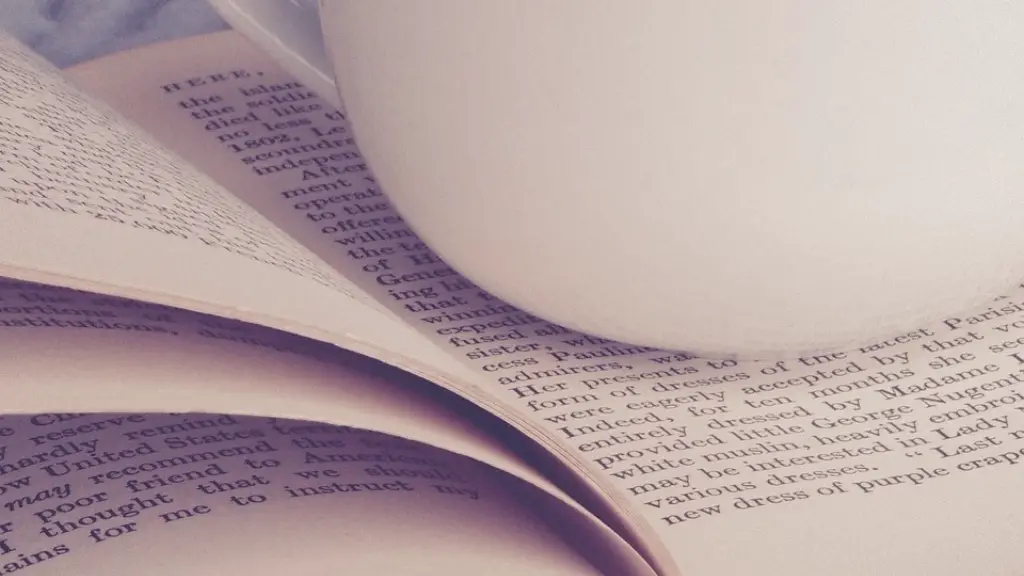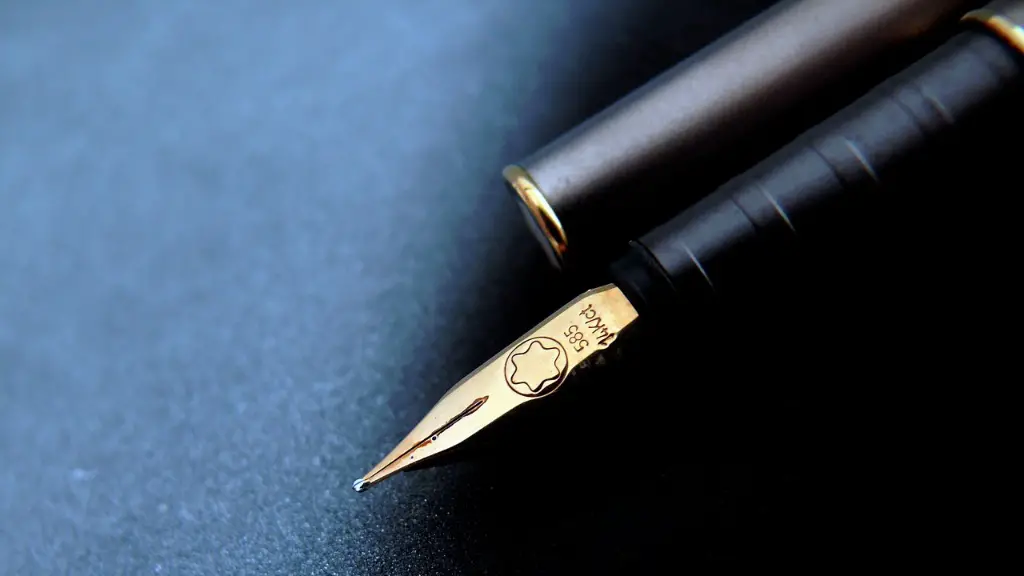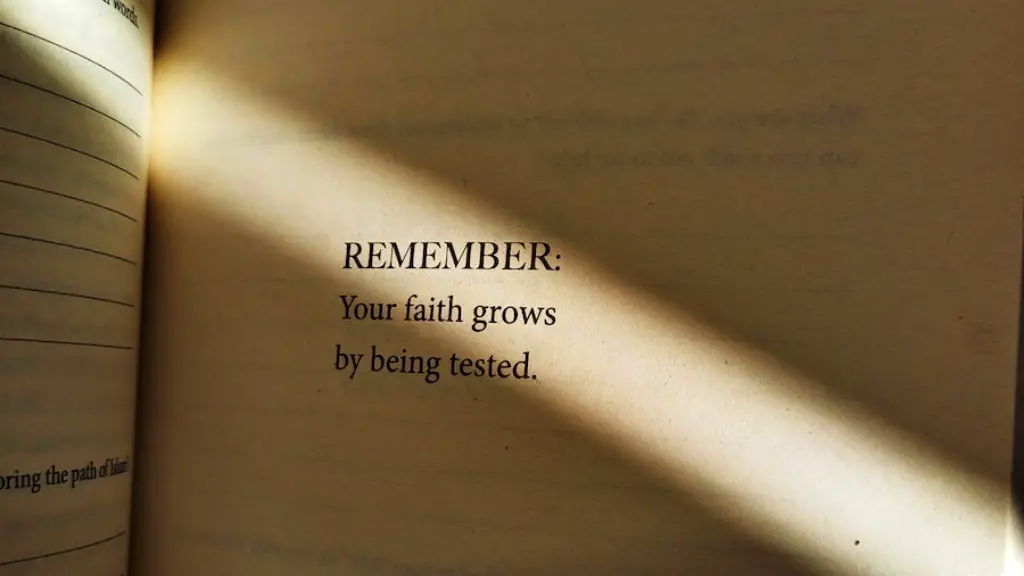Definition of Rhythm in Poetry
Rhythm plays a crucial role in poetry. It influences the way a poem is read and perceived, and its presence brings a unique dynamism that is impossible to ignore. In its simplest form, it is a pattern of stressed and unstressed syllables forming a meter, with each metre having a different feel. By controlling the intensity and flow of a poem, rhythm modulates its meanings and reveals the deepest secrets of a poem.
Types of Rhythm in Poetry
There are various types of rhythm in poetry, each of which has its own characteristics and own appeal.
The first type of rhythm is iambic, which is made up of alternating unstressed and stressed syllables. It is commonly used in English-language poetry and is commonly used by poets to emphasize certain words or phrases. Iambic rhythm is often seen in sonnets, as in Shakespeare’s iconic sonnet 18, “Shall I compare thee to a summer’s day?”
Trochaic rhythm is the opposite of iambic, starting with a stressed syllable. It has a more forceful, aggressive tone and is often used to represent angry feelings or violence. It is also commonly used in nursery rhymes, such as “Hey, Diddle, Diddle” and “Mary Had a Little Lamb”.
Dactylic rhythm also starts with a stressed syllable, but then moves on to two unstressed syllables. It is a musical type of rhythm that is usually used to evoke a sense of joy or lightness. It is often seen in poems about dancing, such as Alfred, Lord Tennyson’s “Rizpah” or Walt Whitman’s “I Sing the Body Electric.”
Anapaestic rhythm follows an unstressed syllable, followed by two stressed syllables. This rhythm is often used to create a lively and humorous tone, perfect for humorous poetry and songs. Charles Dickens’ “The Verse Explaining Why You Will Find the Author at Home, In Spite of the Invention of Post, Telegraph, and Telephone” is a great example of anapaestic rhythm.
Finally, there is the less common amphibrachic rhythm, which starts with an unstressed syllable and ends with a stressed one. This type of rhythm is often used to create a lulling or sombre feeling, for example in Emily Dickinson’s “I Felt a Funeral in my Brain.”
The Role of Rhythm in Poetry
Rhythm plays a vital role in the way a poem is read and interpreted. By creating a set of expectations in the reader, it invites the reader to follow the pattern and take part in the poem’s journey. By controlling the intensity and flow of words, rhythm helps to direct the reader’s attention and draw attention to the most important points in a poem.
Rhythm has the ability to shape a poem’s meaning by adding and deleting syllables. This allows a poet to control the speed and tone of their poem, creating a desired effect that ultimately helps to convey the poem’s message more effectively. By focusing on the rhythm of a poem, readers can often gain a better understanding of its true intent, which would otherwise have been lost or misunderstood.
Furthermore, rhythm promotes a certain kind of internalisation and memorisation of a poem. The regularity of rhythm helps to make a poem easier to remember, so that it can be enjoyed and appreciated long after it is read.
Rhythm and Emotion
Rhythm has a powerful effect on the emotions of both the reader and the writer of a poem. By controlling the pitch and intensity of a poem, rhythm has the power to evoke certain emotions and feelings in the reader, allowing them to better understand the poem’s meaning.
It also has a psychological effect on the writer. By purposefully manipulating the rhythm and meter of a poem, it forces a writer to focus on the content of their poem, and to search for the perfect combination of words and syllables to convey the desired emotions. This often leads to a deeper connection to the poem and an increased emotional impact on the reader.
Rhyming in Poetry
Rhyme is often used in combination with rhythm to further shape a poem’s meaning. It creates an emotional response from the reader and makes a poem easier to remember. It also adds a sense of unity to a poem, as it ties in multiple words and phrases to a single theme or idea.
Rhyme is typically used to soften and introduce a sense of lightness to a poem, which is perfect for writing humorous, child-friendly, or romantic poems. However, it can also be used to break the monotony of rhythm, creating unexpected and potentially powerful images in the poem’s narrative.
Rhythm and Meter
The meter of a poem is the pattern of stress in a line of verse. Different meters create different musical patterns in a poem, which can further shape the tone and meaning of a poem.
The most common type of meter is syllabic, which uses a regular pattern of syllables per line. Iambic pentameter, for example, is a common type of meter in poetry, which uses five unstressed syllables followed by five stressed syllables, creating a set of expectations for the reader. By breaking the expectations of a meter, a poet can add an element of surprise or unexpectedness to a poem, thus creating a more powerful emotional impact.
Rhythm and Poetic Techniques
Rhythm is closely linked to certain poetic techniques, such as alliteration, assonance, and consonance. Alliteration is the repetition of the same sound at the beginning of syllables in a line of poetry, creating an internal rhythm in a poem. Assonance is the repetition of vowel sounds in a line, and consonance is the repetition of consonants. All three techniques help to create an internal rhythm and musicality in a poem, thus adding an extra layer to its meaning and effect.
Rhythm and Language
Finally, rhythm influences the way language is understood and interpreted. Certain languages require different rhythms to be understood correctly, and by controlling the rhythm in a poem, writers can add an extra layer of depth to their work.
For example, in Chinese, rhyme and tone are closely entwined, and by accentuating the correct syllable and controlling the tone, a writer can often intensify the effect of their poem. Furthermore, German and French are far more musical languages than English, and poets often make use of this to further enhance the musicality of their work.
Rhythm and the Narrative
Rhythm has the power to shape a poem’s narrative. By controlling the pace of the poem and introducing unexpected breaks, a poet can create both tension and release in their poem, thus allowing their narrative to become more powerful. Furthermore, by combining different metrical patterns and poetic techniques, a poet can create both a literal and narrative rhythm, allowing them to better convey their story.
Rhythm and Performance
Finally, rhythm plays a key role in the performance of a poem. By introducing breaks and changing the cadence of their verse, a poet can build anticipation in their audience and create a more powerful delivery. Furthermore, by controlling the intensity of the poem’s rhythm, a poet can draw out their performance, allowing them to create an even stronger impact in their audience.
Rhythm and Repetition
In addition to controlling the cadence of a poem, poets often use repetition to further control the rhythm. By repeating certain words, phrases, or even whole verses, a poet can create a lulling or hypnotic effect, perfect for writing lullabies or religious hymns.
Repetition also ties in with assonance and alliteration, as it has the ability to emphasize and draw attention to certain words and phrases. By combining repetition with these two techniques, a poet can further emphasize words in their poem, thus creating a more memorable and powerful narrative.
Rhythm and Imagery
Rhythm also has an influence on the imagery in a poem. By creating a rhythmical pattern within their verse, a poet can draw attention to certain words or phrases, thus creating a more vivid image in their readers’ minds. Furthermore, this emphasis can also guide the reader’s interpretation of a poem, thus allowing them to gain a deeper understanding of the poet’s message.
Rhythm and Style
Finally, rhythm has the power to shape the writing style of a poet. By controlling the stress and intensity of their poem, a poet can create a certain tone or feel to their work, thus allowing them to create a unique, personal style. Furthermore, by manipulating the meter of their poem, a poet can also introduce a sense of surprise or unexpectedness into their writing, thus allowing them to better convey the message of their poem.



